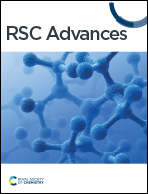Facile synthesis of NiFe2O4-based nanoblocks for low-temperature detection of trace n-butanol
Abstract
Fe2O3-loaded NiFe2O4 nanoblocks were successfully developed under a straightforward one-step hydrothermal synthesis method, aiming to detect trace amounts of n-butanol at the parts per billion (ppb) concentration range. The synthesized samples were comprehensively characterized using various techniques, including XRD, SEM, XPS, TEM and SAED. At a tantalizingly low temperature of 130 °C, the Ni/Fe-2 gas sensor demonstrated the optimum response (Ra/Rg = 29.747 @ 10 ppm) to n-butanol. Furthermore, Ni/Fe-2 sensor exhibited remarkable stability and reproducibility and an ultra-low detection limit. The enhanced gas sensitivity was primarily due to the assembly of Ni/Fe-2 nanoblocks from differently sized nanospheres, which exhibited a rich surface porosity conducive to gas adsorption. Besides, the formation of heterojunctions and the augmentation of oxygen vacancy content are also conducive to enhancing gas sensing capabilities. The Ni/Fe-2 sensor is expected to successfully detect trace amounts of n-butanol.



 Please wait while we load your content...
Please wait while we load your content...